 W
WAd gentes is the Second Vatican Council's decree on missionary activity. The title is Latin for "To the Nations," and is from the first line of the decree, as is customary with Roman Catholic documents. It establishes evangelization as one of the fundamental missions of the Catholic Church and reaffirms the tie between evangelization and charity for the poor. Ad gentes also calls for the formation of strong Christian communities as well as strong relations with other Christians. Finally, it lays out guidelines for the training and actions of the missionaries.
 W
WAd providam was the name of a Papal Bull issued by Pope Clement V in 1312. It built on a previous bull, Vox in excelso, which had disbanded the order of the Knights Templar. Ad providam essentially handed over all Templar assets to the Hospitallers, with the exception of some resources which were left to provide pensions to some Templars who had escaped execution and converted to a monastic life.
 W
WAd sanctam beati Petri sedem is an apostolic constitution in the form of a papal bull promulgated by Pope Alexander VII in 1656 which judged the meaning and intention of Cornelius Jansen's words in Augustinus, and confirmed and renewed the condemnation in Cum occasione promulgated by Pope Innocent X in 1653 that five propositions found in Augustinus were heretical.
 W
WApostolicam Actuositatem is the Second Vatican Council's Decree on the Apostolate of the Laity. It was approved by a vote of 2,340 to 2 of bishops assembled at the Council, and promulgated by Pope Paul VI on 18 November 1965. The title is Latin for "Apostolic Activity", which is from the first line of the decree, as is customary with significant Catholic documents. The purpose of the document was to encourage and guide lay Catholics in their Christian service. In this decree the Council sought to describe the nature, character, and diversity of the lay apostolate, to state its basic principles, and to give pastoral directives for its more effective exercise. The specific objectives of lay ministry are: evangelization and sanctification, renewal of the temporal order whereby Christ is first in all things, and charitable works and social aid. The decree quotes Colossians 3:17: "Whatever you do in word or work, do all in the name of the Lord Jesus Christ, giving thanks to God the Father through Him".
 W
WThe Athanasian Creed, also called the Pseudo-Athanasian Creed and sometimes known as Quicunque Vult which is both its Latin name and opening words meaning "Whosoever wishes", is a Christian statement of belief focused on Trinitarian doctrine and Christology. The creed has been used by Christian churches since the sixth century. It is the first creed in which the equality of the three persons of the Trinity is explicitly stated. It differs from the Nicene-Constantinopolitan and Apostles' Creeds in the inclusion of anathemas, or condemnations of those who disagree with the creed.
 W
WThe Collectiones canonum Dionysianae, also known as Collectio Dionysiana or Dionysiana Collectio, are the several collections of ancient canons prepared by a Scythian monk, Dionysius 'the humble' (exiguus). They include the Collectio conciliorum Dionysiana I, the Collectio conciliorum Dionysiana II, and the Collectio decretalium Dionysiana. They are of the utmost importance for the development of the canon law tradition in the West.
 W
WThe Commentariolus is Nicolaus Copernicus's brief outline of an early version of his revolutionary heliocentric theory of the universe. After further long development of his theory, Copernicus published the mature version in 1543 in his landmark work, De revolutionibus orbium coelestium.
 W
WThe Corpus Agrimensorum Romanorum is a Roman book on land surveying which collects works by Siculus Flaccus, Frontinus, Agennius Urbicus, Hyginus Gromaticus and other writers. The text is preserved in the fifth or sixth-century uncial manuscript known as Codex Guelfferbytanus 36.23 Augusteus 2, held in the Herzog August Bibliothek in Wolfenbüttel. It is one of the few surviving non-literary and non-religious illuminated manuscripts from late antiquity. The text was first printed in 1554 by Adrianus Turnebus, under the title De Agrorum Conditionibus et Constitutionibus Limitum.
 W
WDecades of the New World by Peter Martyr is a series of letters and reports of the early explorations of Central and South America that was published beginning 1511 and later anthologized. Being among the earliest such reports, Decades are of great value in the history of geography and discovery and describe the early contacts of Europeans and Native Americans derived from the narrative of the voyages of Christopher Columbus in the Caribbean and the reports from Hernán Cortés's Mexican expedition.
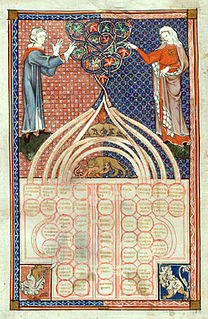 W
WThe Decretum Gratiani, also known as the Concordia discordantium canonum or Concordantia discordantium canonum or simply as the Decretum, is a collection of canon law compiled and written in the 12th century as a legal textbook by the jurist known as Gratian. It forms the first part of the collection of six legal texts, which together became known as the Corpus Juris Canonici. It was used as the main source of law by canonists of the Roman Catholic Church until the Decretals, promulgated by Pope Gregory IX in 1234, obtained legal force, after which it was the cornerstone of the Corpus Juris Canonici, in force until 1917.
 W
WDei verbum, the Second Vatican Council's Dogmatic Constitution on Divine Revelation, was promulgated by Pope Paul VI on 18 November 1965, following approval by the assembled bishops by a vote of 2,344 to 6. It is one of the principal documents of the Second Vatican Council, indeed their very foundation in the view of one of the leading Council Fathers, Bishop Christopher Butler. The phrase "Dei verbum" is Latin for "Word of God" and is taken from the first line of the document, as is customary for titles of major Catholic documents.
 W
WEx hac augusta Principis Apostolorum cathedra is a papal bull issued by Pope Leo XIII on 5 July 1881, by which he restored the regular Church hierarchy in Bosnia and Herzegovina after its occupation by Austria-Hungary from the Ottoman Empire, with Archdiocese of Vrhbosna seated in Sarajevo having three suffragan dioceses: Banja Luka, Mostar-Duvno and Trebinje-Mrkan, with latter being under the administration of the bishop of Dubrovnik.
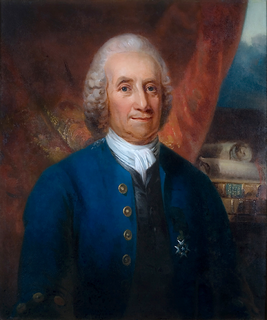 W
WHeaven and Hell is the common English title of a book written by Emanuel Swedenborg in Latin, published in 1758. The full title is Heaven and its Wonders and Hell From Things Heard and Seen, or, in Latin: De Caelo et Eius Mirabilibus et de inferno, ex Auditis et Visis. It gives a detailed description of the afterlife; how people live after the death of the physical body. The book owes its popular appeal to that subject matter.
 W
WIneffabilis Deus is an apostolic constitution by Pope Pius IX. It defines the dogma of the Immaculate Conception of the Blessed Virgin Mary. The decree was promulgated on December 8, 1854, the date of the annual Solemnity of the Immaculate Conception, and followed from a positive response to the encyclical Ubi primum.
 W
WJerome's first epistle to Paulinus is the letter number 53 of Jerome, addressed to Paulinus of Nola.
 W
W"Monetae cudendae ratio" is a paper on coinage by Nicolaus Copernicus. It was written in 1526 at the request of Sigismund I the Old, King of Poland, and presented to the Prussian Diet.
 W
WNewton's laws of motion are three laws of classical mechanics that describe the relationship between the motion of an object and the forces acting on it. These laws can be paraphrased as follows:
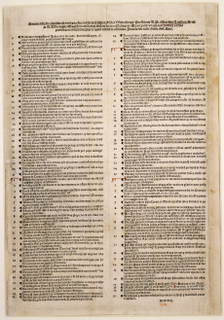 W
WThe Ninety-five Theses or Disputation on the Power and Efficacy of Indulgences is a list of propositions for an academic disputation written in 1517 by Martin Luther, professor of moral theology at the University of Wittenberg, Germany, at the time controlled by the Electorate of Saxony. Retrospectively considered to signal the birth of Protestantism, this document advances Luther's positions against what he saw as the abuse of the practice of clergy selling plenary indulgences, which were certificates believed to reduce the temporal punishment in purgatory for sins committed by the purchasers or their loved ones. In the Theses, Luther claimed that the repentance required by Christ in order for sins to be forgiven involves inner spiritual repentance rather than merely external sacramental confession. He argued that indulgences led Christians to avoid true repentance and sorrow for sin, believing that they could forgo it by obtaining an indulgence. These indulgences, according to Luther, discouraged Christians from giving to the poor and performing other acts of mercy, which he attributed to a belief that indulgence certificates were more spiritually valuable. Though Luther claimed that his positions on indulgences accorded with those of the Pope, the Theses challenge a 14th-century papal bull stating that the pope could use the treasury of merit and the good deeds of past saints to forgive temporal punishment for sins. The Theses are framed as propositions to be argued in debate rather than necessarily representing Luther's opinions, but Luther later clarified his views in the Explanations of the Disputation Concerning the Value of Indulgences.
 W
WNotes on the Jewish Temple is a manuscript by Isaac Newton, written in Latin, Hebrew, Aramaic and Greek, which holds notes on the Jewish Temple and its rituals.
 W
W"Nova Methodus pro Maximis et Minimis" is the first published work on the subject of calculus. It was published by Gottfried Leibniz in the Acta Eruditorum in October 1684. It is considered to be the birth of infinitesimal calculus.
 W
WO magnum mysterium is a responsorial chant from the Matins of Christmas.
 W
WOn the Trinity is a Latin book written by Augustine of Hippo to discuss the Trinity in context of the logos. Although not as well known as some of his other works, some scholars have seen it as his masterpiece, of more doctrinal importance even than Confessions or The City of God.
 W
WPastor aeternus, was issued by the First Vatican Council, July 18, 1870. The document defines four doctrines of the Catholic faith: the apostolic primacy conferred on Peter, the perpetuity of the Petrine Primacy in the Roman pontiffs, the definition of the papal primacy as a papal supremacy, and Papal infallibility – infallible teaching authority (magisterium) of the Pope.
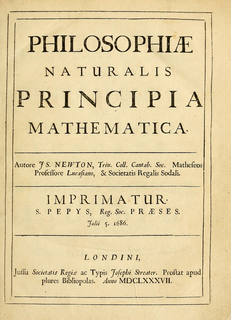 W
WPhilosophiæ Naturalis Principia Mathematica by Isaac Newton, often referred to as simply the Principia, is a work expounding Newton's laws of motion and his law of universal gravitation; in three books written in Latin, first published 5 July 1687.
 W
WSacrosanctum Concilium, the Constitution on the Sacred Liturgy, is one of the constitutions of the Second Vatican Council. It was approved by the assembled bishops by a vote of 2,147 to 4 and promulgated by Pope Paul VI on 4 December 1963. The main aim was to revise the traditional liturgical texts and rituals to reflect more fully fundamental principles, and be more pastorally effective in the changed conditions of the times, clarifying not only the role of ordained ministers but the modalities of appropriate participation of lay faithful in the Catholic Church's liturgy, especially that of the Roman Rite. The title is taken from the opening lines of the document and means "this Sacred Council".
 W
WUniversalis Ecclesiae was a papal bull of 29 September 1850 by which Pope Pius IX recreated the Roman Catholic diocesan hierarchy in England, which had been extinguished with the death of the last Marian bishop in the reign of Elizabeth I. New names were given to the dioceses, as the old ones were in use by the Church of England. The bull aroused considerable anti-Catholic feeling among English Protestants.
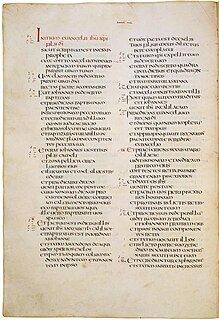 W
WThe Vulgate is a late-4th-century Latin translation of the Bible that was to become the Catholic Church's officially promulgated Latin version of the Bible during the 16th century, and is still used in the Latin Church to this day. The text of the Vulgate is kept in numerous manuscripts.